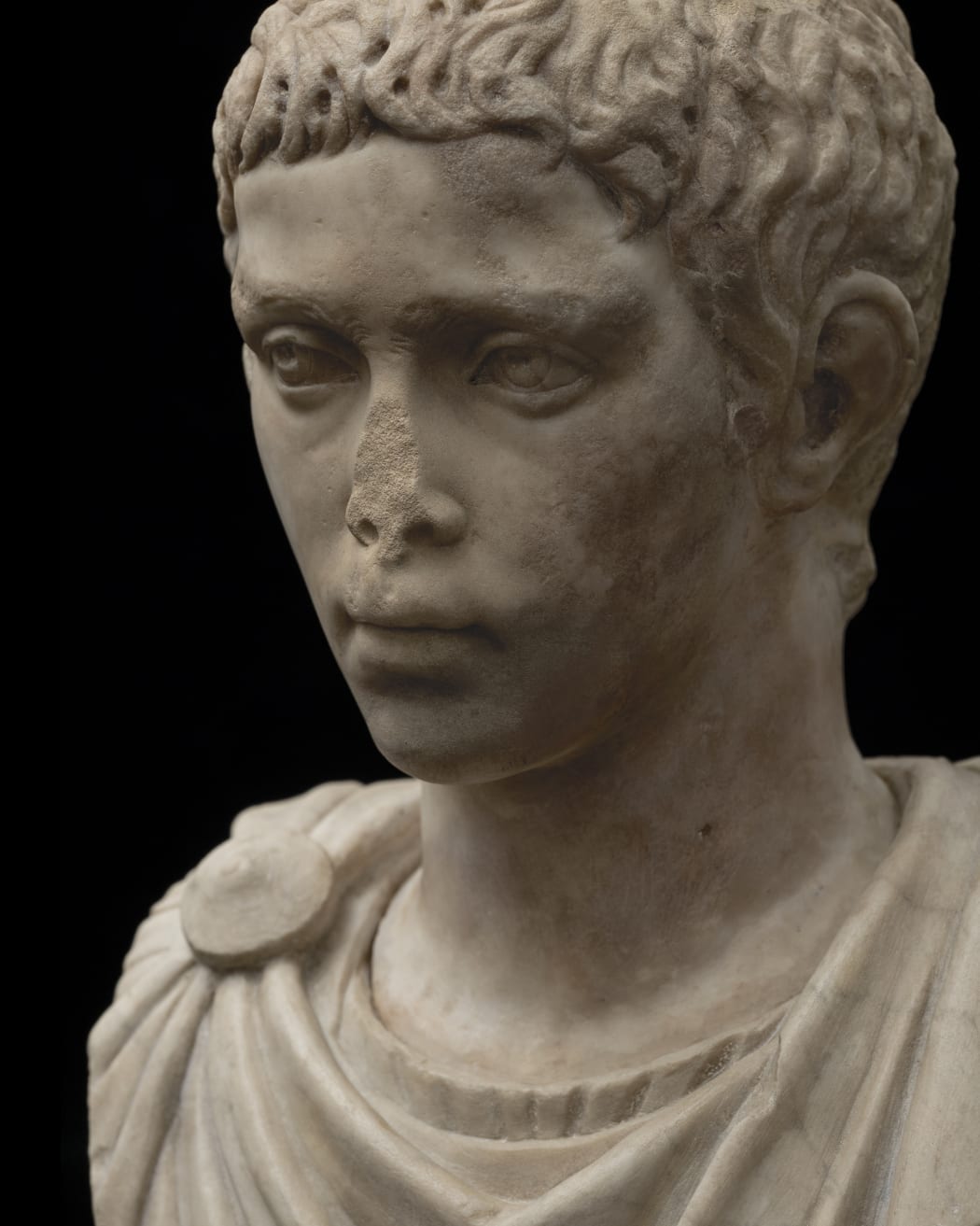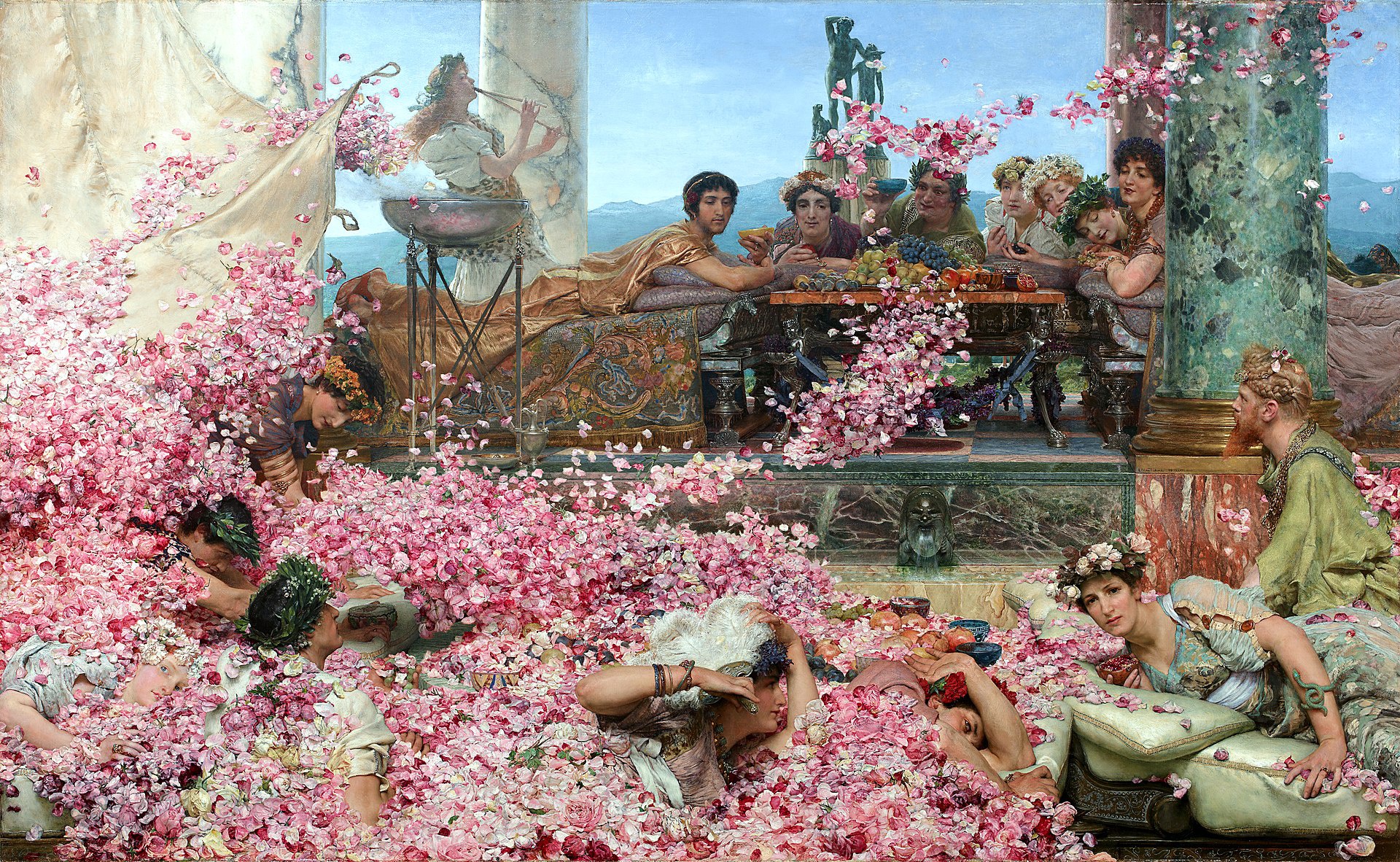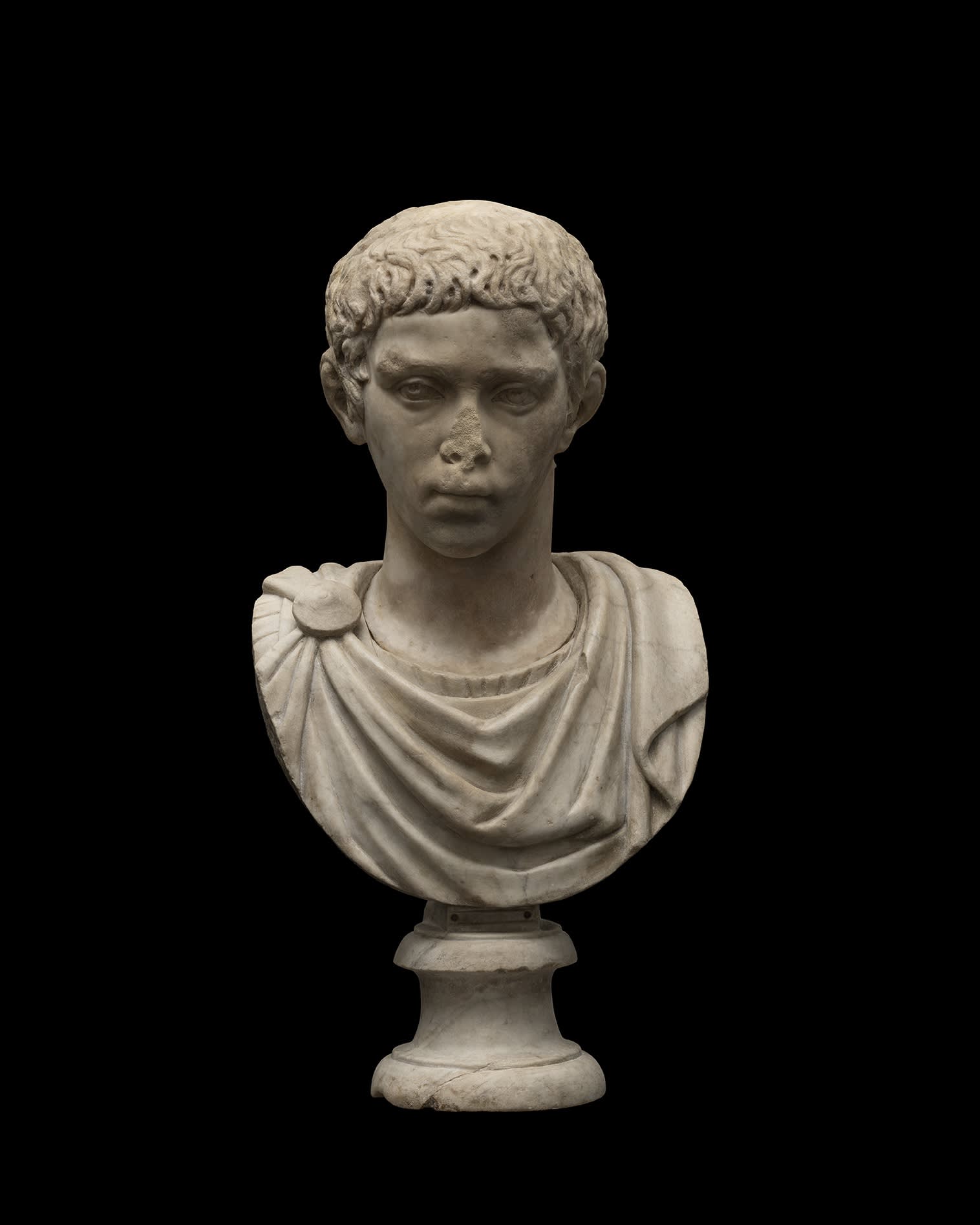Elagabalus

PROBABLY OF THE EMPEROR ELAGABALUS
Height of head: 22 cm; height of bust and socle: 62 cm
Elagabalus, (Heliogabalus) was emperor from AD 218 to 222. Born Varius Avitus Bassianus Marcus Aurelius Antoninus in AD 203 or 204, in Syria, Elagabalus rose to power at age 14, because his mother Julia Soaemias claimed he was Caracalla's illegitimate child to win the support of the Roman army. His mother, and grandmother Julia Maesa, ultimately ran affairs, but Elagabalus was the iconic emperor.

Known for his beauty, Elagabalus had large eyes and a youthful, underdeveloped face. In a conservative society where emphasis was placed on traditional social and gender structures, his behaviour was eventually his downfall. He liked to wear ostentatious gold or purple tunics, and at times a female diadem. His sexual appetites for both men and women became notorious, and he promised a huge reward to any doctor who could perform a sex-change operation on him. He married at least three women within four years and enacted a series of controversial religious acts promoting worship of the sun-god El-Gabal, of the Syrian city of Emesa, of which his family were high priests.

The Roses of Heliogabalus by Alma-Tadema (1888), oil on canvas
Further debauchery supposedly included smothering his unsuspecting guests with rose petals at a banquet, beautifully depicted by Alma Tadema in the above painting. It is unsurprising therefore that the Roman army and senate turned against him, and political infighting ensued amongst the women behind his administration. He adopted the future Alexander Severus in an attempt to legitimise his power, but the Praetorian Guards murdered Elagabalus and his mother anyway, dragging their beheaded bodies through the streets of Rome. See C. Dio, Roman History, Book 80.

Due to the rarity of portraits of Elagabalus, it is hard to be sure whether this depicts the emperor, or a youth of the same period. The eyes and full lips certainly accord with other depictions of the emperor. For a portrait of Elagabalus with similar wavy hair and facial features see the Capitoline Museum, Palazzo Nuovo, Rome, inv. MC0470. There is also a portrait bust of a youth, found at Eleusis, from the time of emperor Elagabalus, now in the National Archaeological Museum of Athens (Inv. No. 2350), which also bears similar facial features including the full lips. For a portrait bust identified as Elagabalus in the Museum of Fine Arts, Boston (acc. no. 1977.337) see C.C. Vermeule et. al., Sculpture in Stone and Bronze in the Museum of Fine Arts, Boston: Additions to the Collections of Greek, Etruscan, and Roman Art, 1971 – 1988, no. 051.
